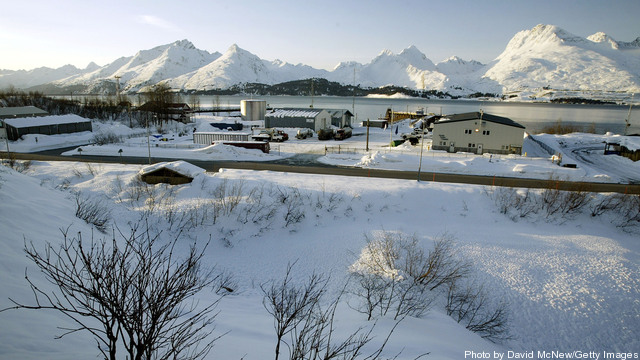Judge Murtha: “The harm to public interest from even a temporary shutdown of #Vermont Yankee would be significant” – http://bit.ly/zdUwTp N_E_I
Local
Judge Murtha: “The harm to public interest from even a temporary shutdown of #Vermont Yankee would be significant” – http://bit.ly/zdUwTp
By Peter GardettSign up and get Breaking Energy news in your inbox.
We will never sell or share your information without your consent. See our privacy policy.
The hydraulic fracturing technology that opened vast US natural gas shale resources could be snared in what one analyst calls “a regulatory race to the top.”
The industry is arguing that regulation of hydraulic fracturing should stay at the state level, where it is traditionally managed. Environmentalists disagree, saying the states’ record is spotty and tougher federal standards are needed. The Environmental Protection Agency is studying the issues, and aims for proposed rules in 2014. Keep reading →

In what may be the nation’s next boomtown, the ground is, literally, booming. Residents here in northeastern Ohio are receiving up to $5,000 an acre from energy companies that lease their land — plus monthly royalties. But they have also experienced at least 11 earthquakes since last March, state officials say. Scientists say the region’s quakes are likely tied to the burgeoning oil and gas industry. At 3:05 p.m. on New Year’s Eve, the people of Youngstown, Ohio, felt their homes shake. “I thought a jetliner crashed into the side of my house,” said resident Jim Bunosky. He was one of 300 to 400 local residents who attended a community meeting last week to discuss the quake’s origin, which some believe is linked to a local well used for wastewater disposal from oil and gas drilling.

Foreign firms, hungry to cash in on the American energy boom, have invested nearly $6 billion in U.S. gas and oil drilling in the last few weeks. Energy giants from China, France and Spain have snapped up stakes in fields in Ohio, Mississippi, Colorado and Michigan. These investments will likely add to the recent boom in U.S. natural gas production, pushing already low natural gas prices even lower. Low domestic prices could drive natural gas producers to seek out European and Asian markets, according to analysts, where the fuel commands three or four times the price. “Of course that will” lead to more exports, said Nansen Saleri, president of the oil field consulting firm Quantum Reservoir Impact. “And it will be a tremendous opportunity.”

The economy is making gains on its path to a slow recovery, which means consumers can expect higher gas prices this year. “When the economy improves, we will be using more petroleum,” explains Patrick DeHaan, senior petroleum analyst at GasBuddy.com. “It’s all but a certain that prices will likely go up this year.” The Department of Energy released its 2012 oil forecast Tuesday, upping the price of crude oil to $100 per barrel, which could be bad news for consumers because the price of oil directly correlates with gas prices. For 2011, the average price per barrel of U.S. crude oil was $95 per barrel, according to the Energy Department, and according to GasBuddy.com, the yearly average for 2011 was $3.51 per gallon. The current national average of unleaded regular gas two weeks into 2012 is $3.34 per gallon. With the current national average so high at the beginning of the year, DeHaan says things aren’t looking good for motorists. This article is a linkout: http://www.foxbusiness.com/personal-finance/2012/01/11/expect-higher-gas-prices-this-year/#ixzz1jBnHe6TI

Alaskans’ way of life is threatened as oil production declines and new pipelines for natural gas remain difficult to justify financially.
Larry Persily, Federal Coordinator for Alaska Natural Gas Transportation Projects, said only high oil prices are keeping state royalties from dropping even more. The state gets 90% of its General Fund – some $8 billion last year — from oil and gas royalties. Alaskans pay no income or sales taxes, and get an annual cash rebate from the royalty fund. Keep reading →

New Jersey lawmakers moved to boost the state’s booming solar market by supporting the market price for certificates issued for solar-generated power.
The state legislature’s Assembly Telecommunications and Utilities Committee on Thursday approved two bills that seek to reverse a recent sharp fall in the value of the tradable Solar Renewable Energy Certificates. Keep reading →

Although solar photovoltaic (PV) panel prices are rapidly dropping, integrating a high quality solar energy into the grid will have added costs, particularly because solar is an intermittent resource with highly variable output and repercussions for transmission grids.
To assess the issue, the US Department of Energy and Nevada’s utility, NV Energy, jointly sponsored a study conducted by Navigant Consulting on what the integration of solar in Nevada will mean for the utility. Download the full study here. Keep reading →

A biomass generation plant serving a giant Department of Energy installation has been delivered under the largest Energy Savings Performance Contract to date.
The 20 MW biomass power facility will provide roughly 30% of the 310 square mile Savannah River Site‘s power needs once it becomes fully operational in 2012. During six weeks of performance tests the biomass facility produced more than 3 million kilowatt hours of power. Keep reading →

You’ve heard it before: Taking full advantage of wind power is dependent on finding an economically viable way to store its production, which often comes at night, when demand is low.
In Minnesota, where wind provided just shy of 10% of the state’s electricity in 2010 and continues to grow, a new study is suggesting that a viable way to do just that might be there for the taking in the Iron Range. Keep reading →
